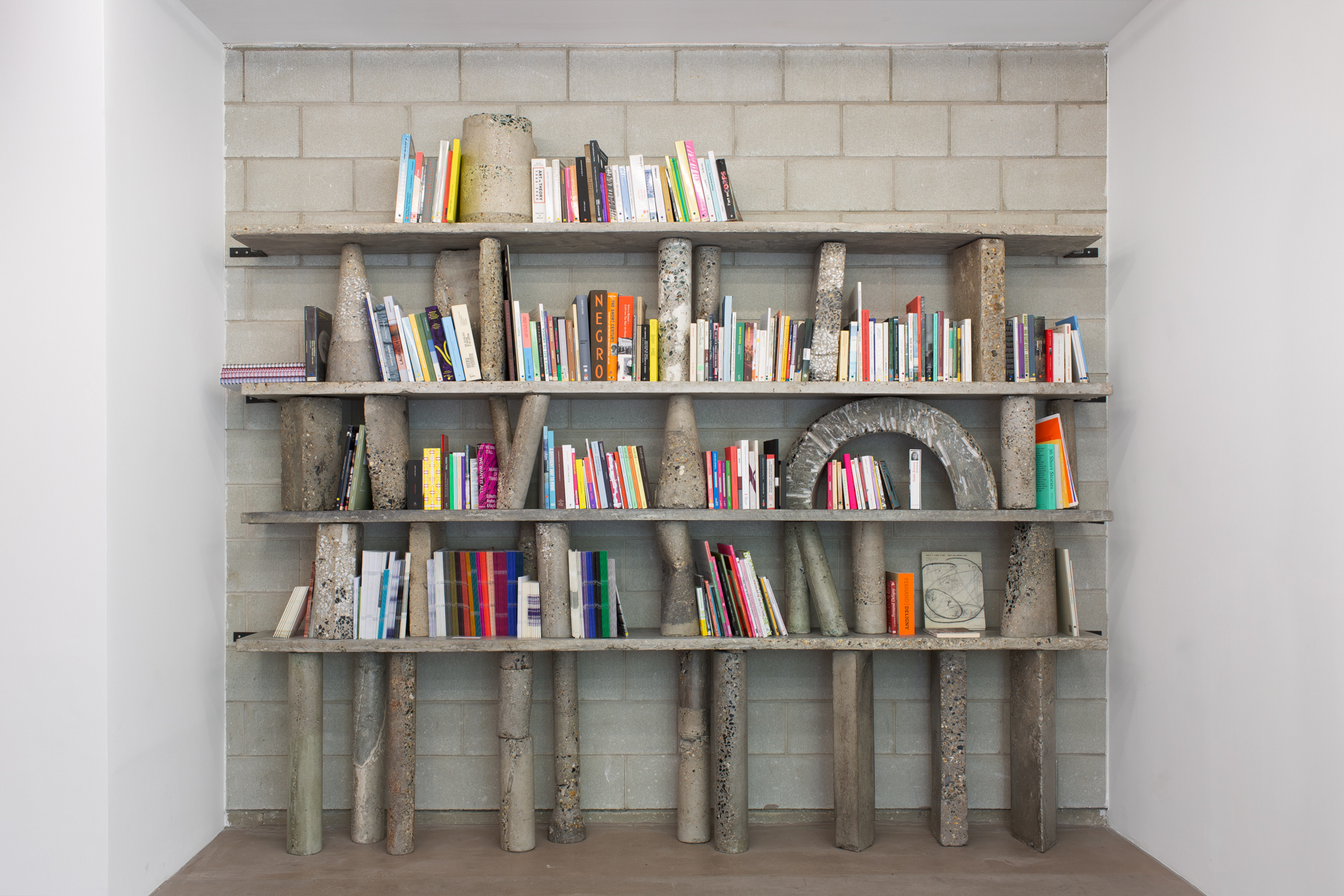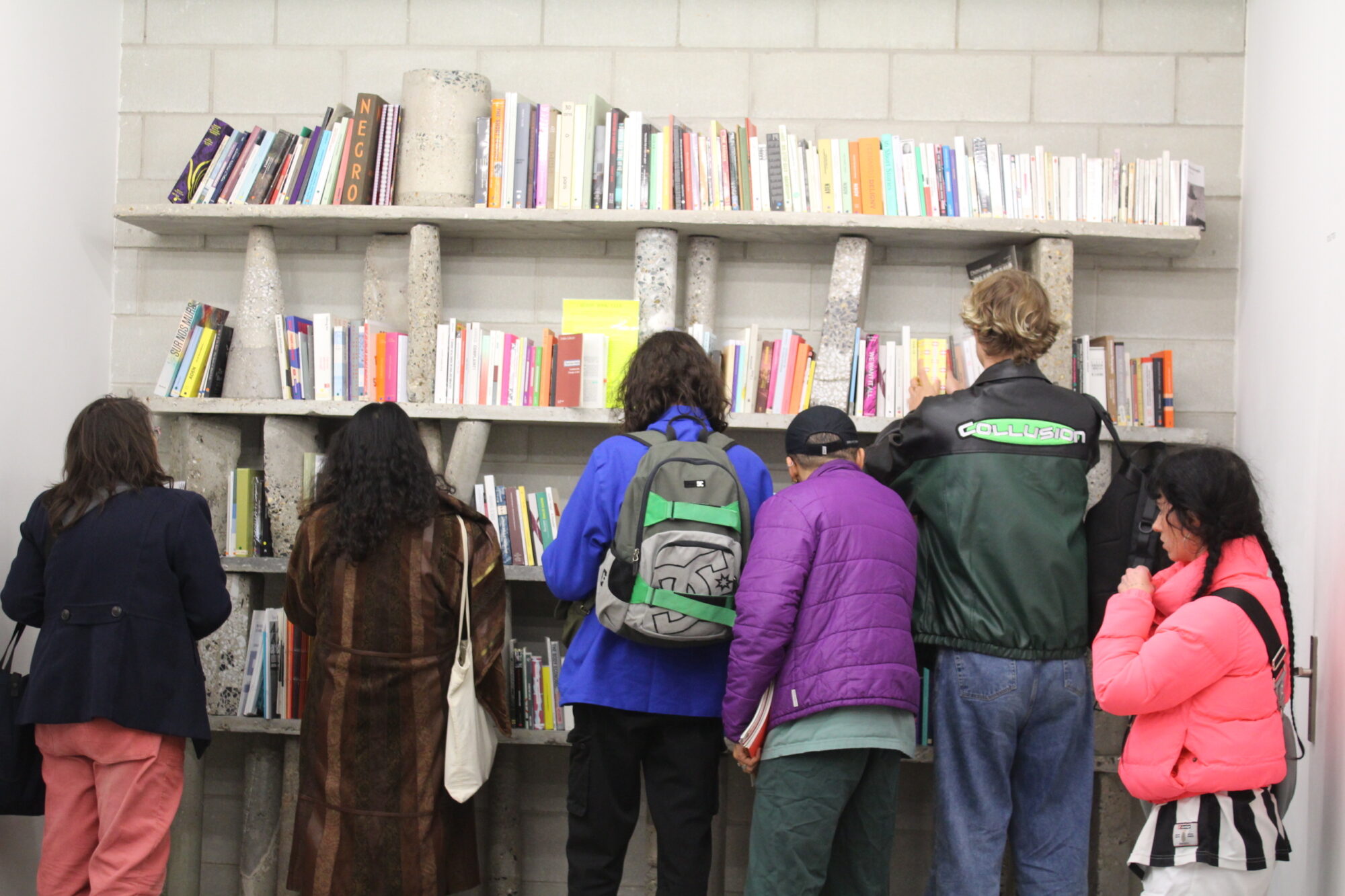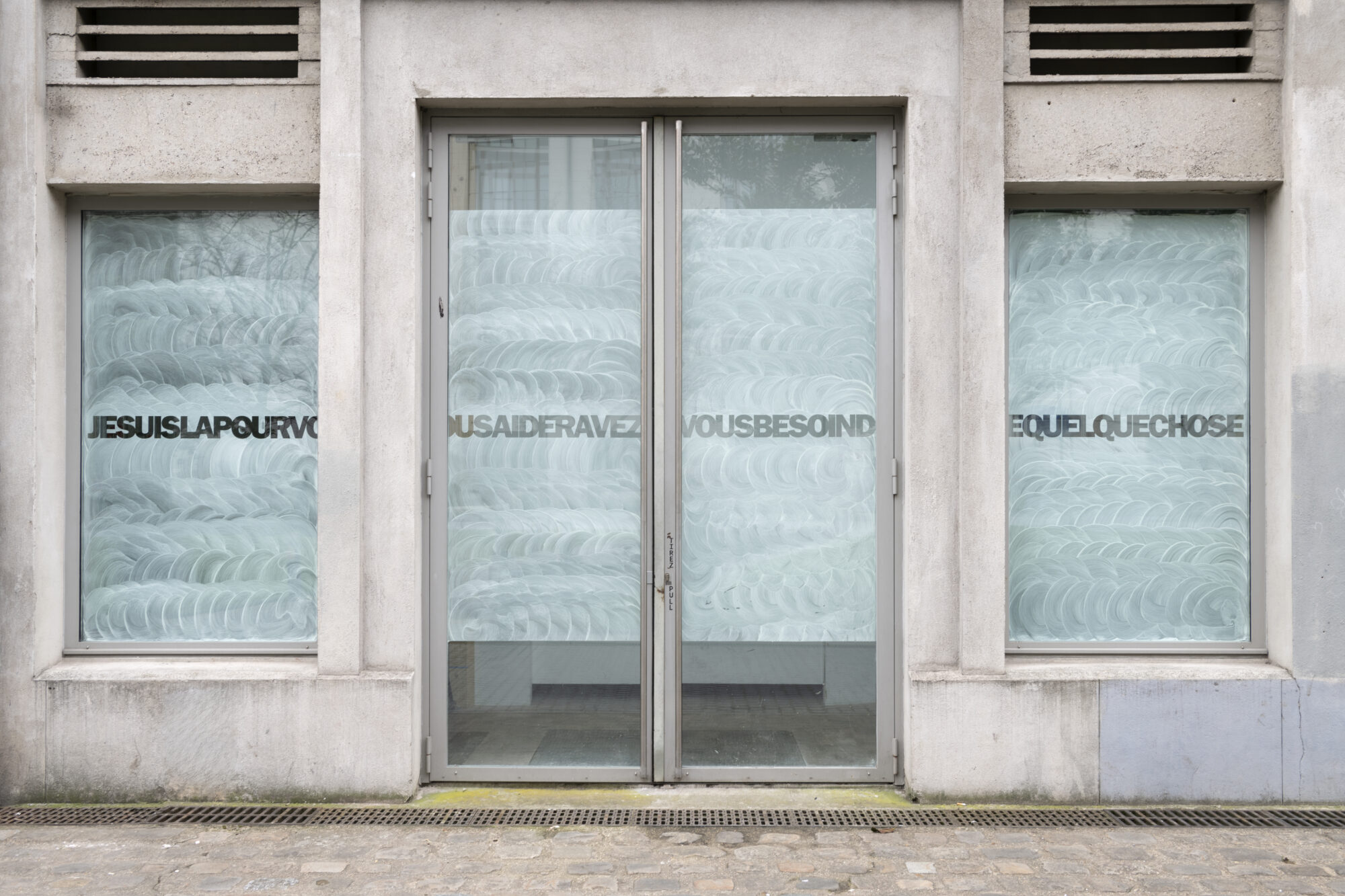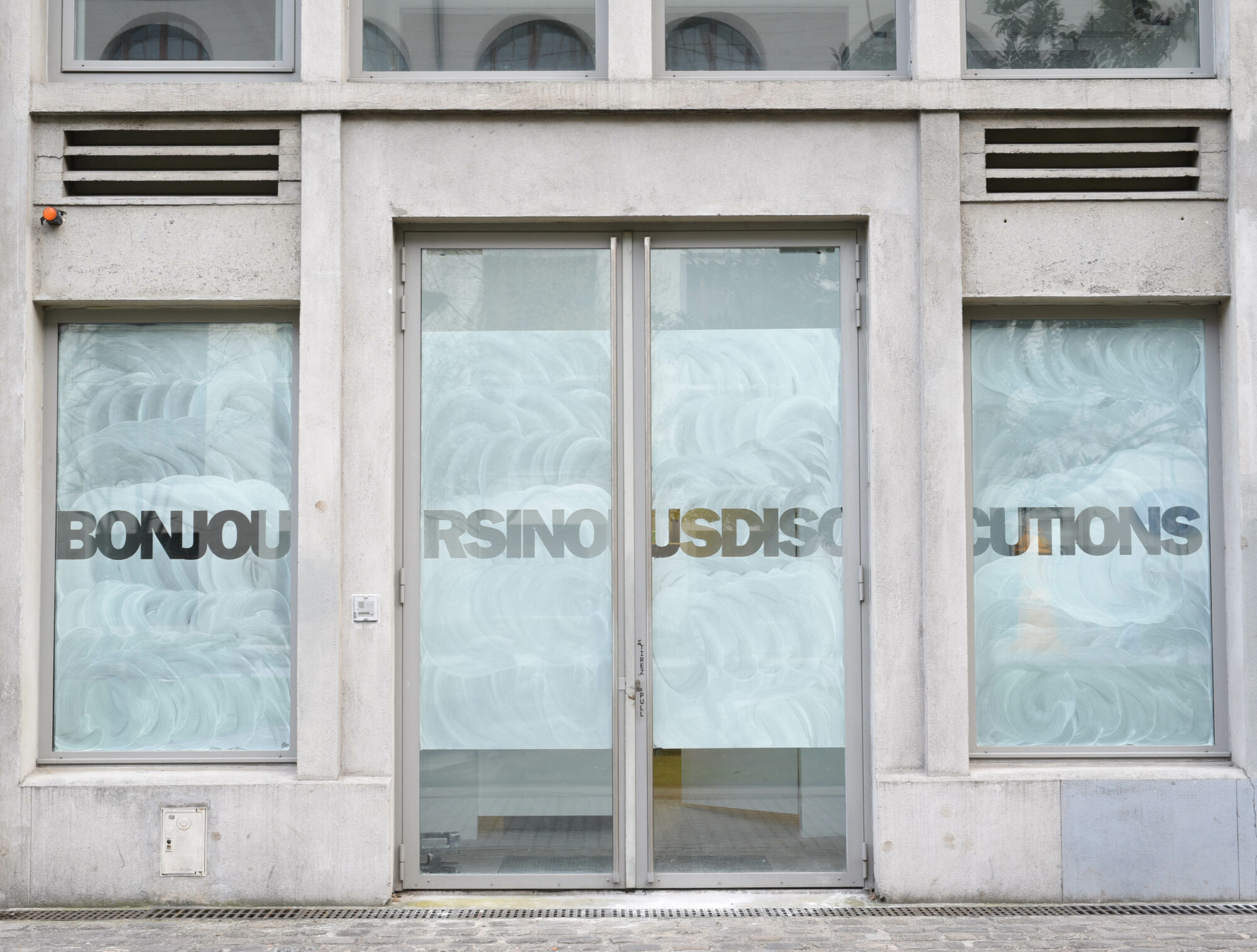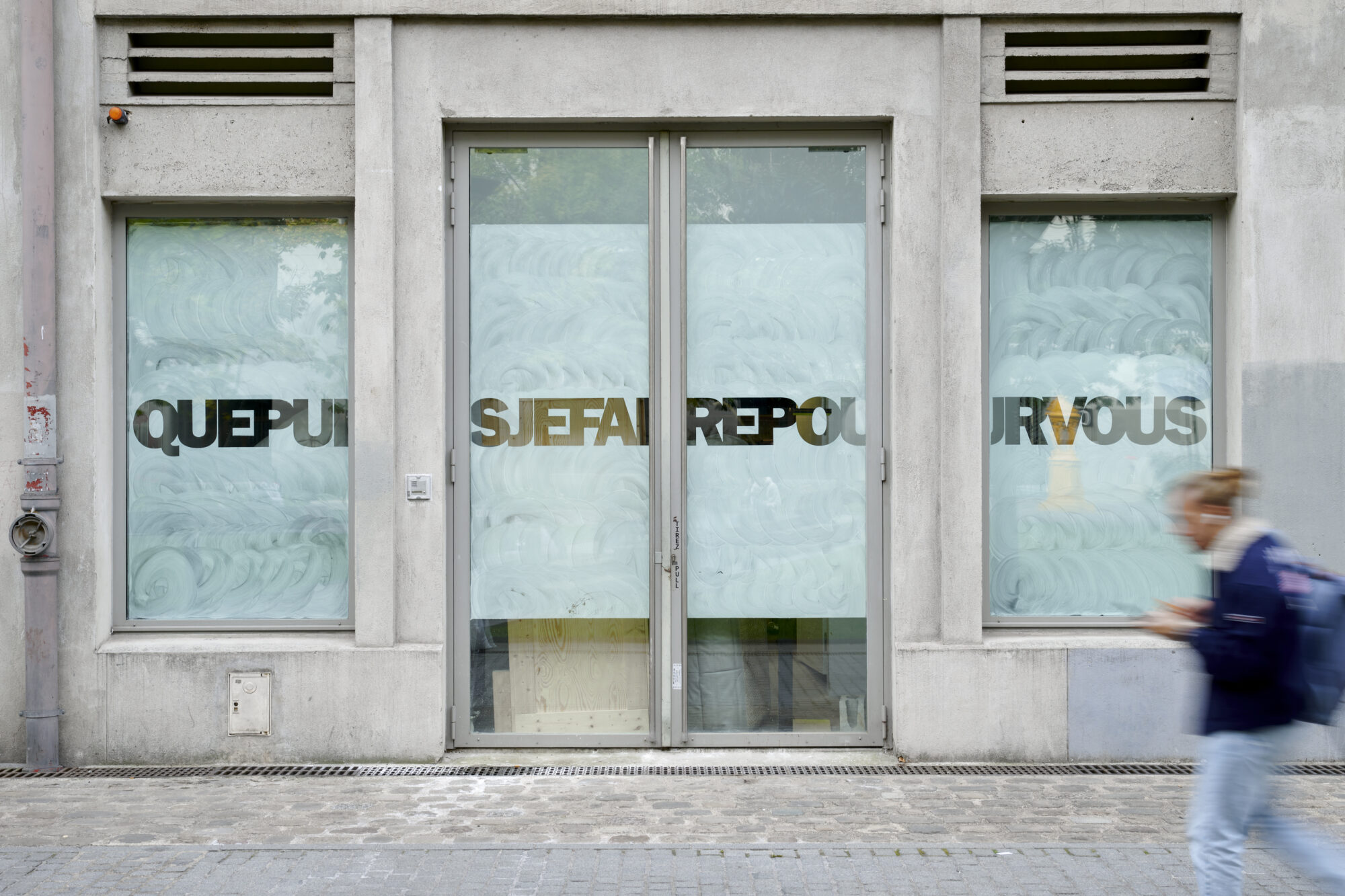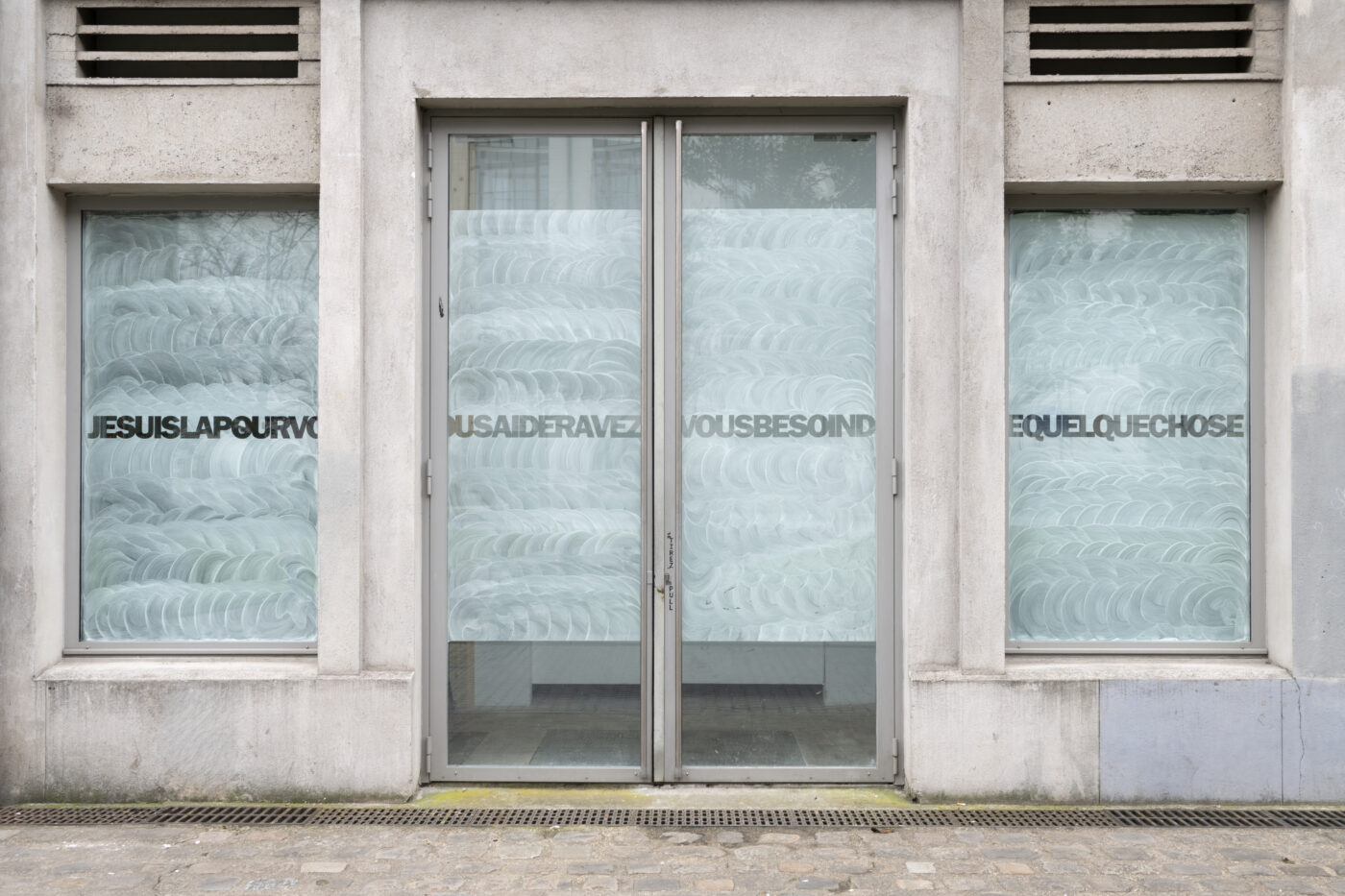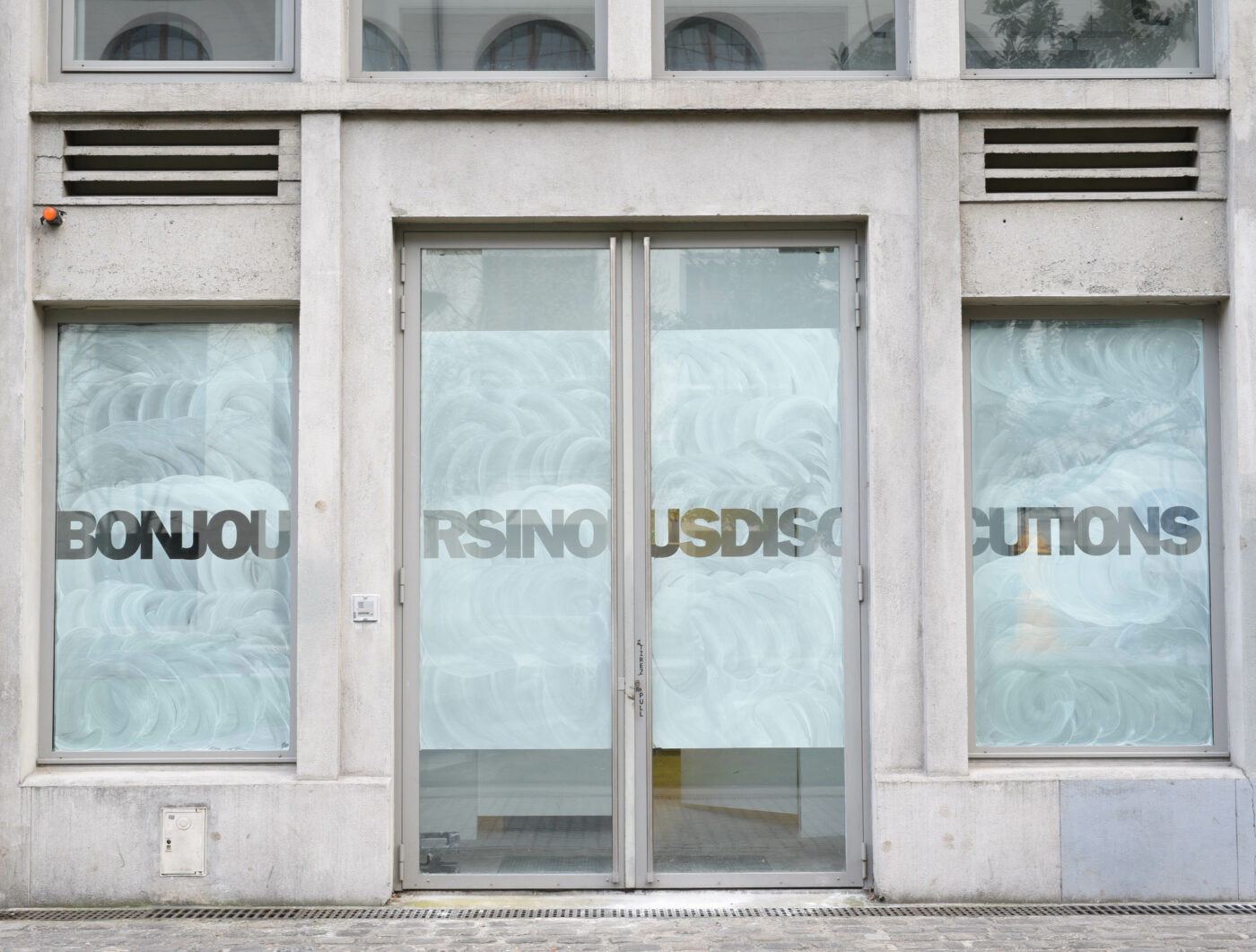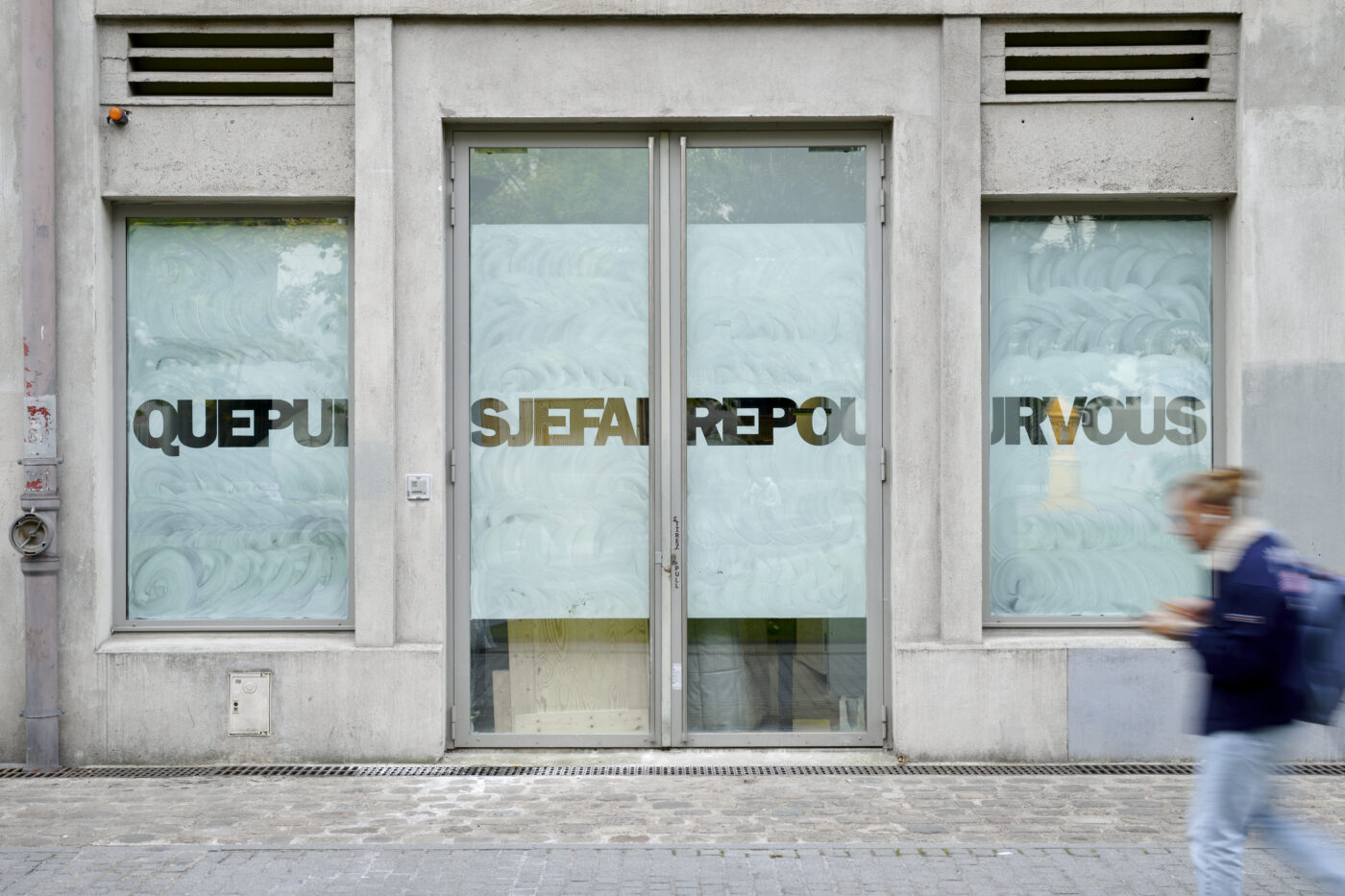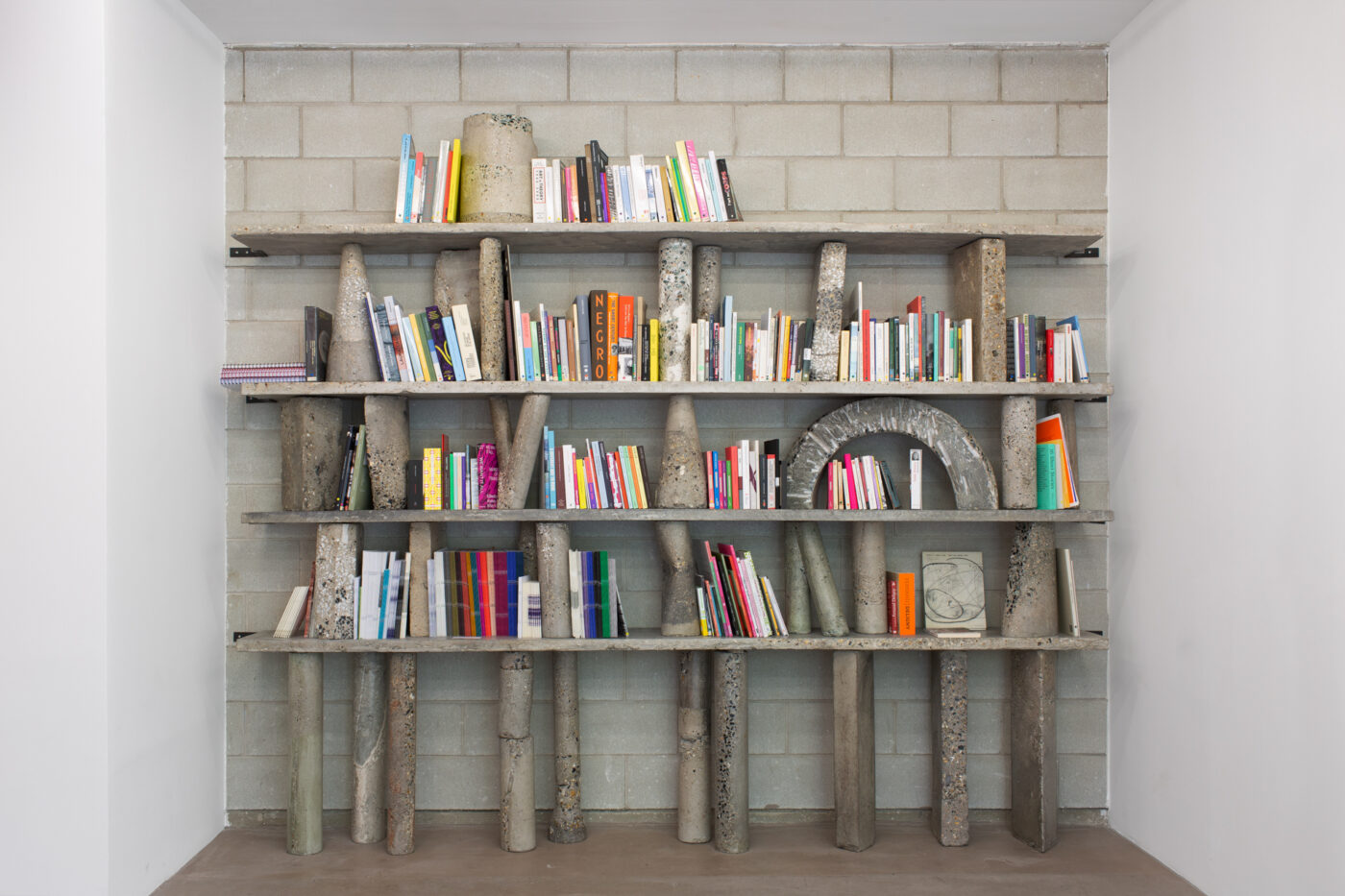
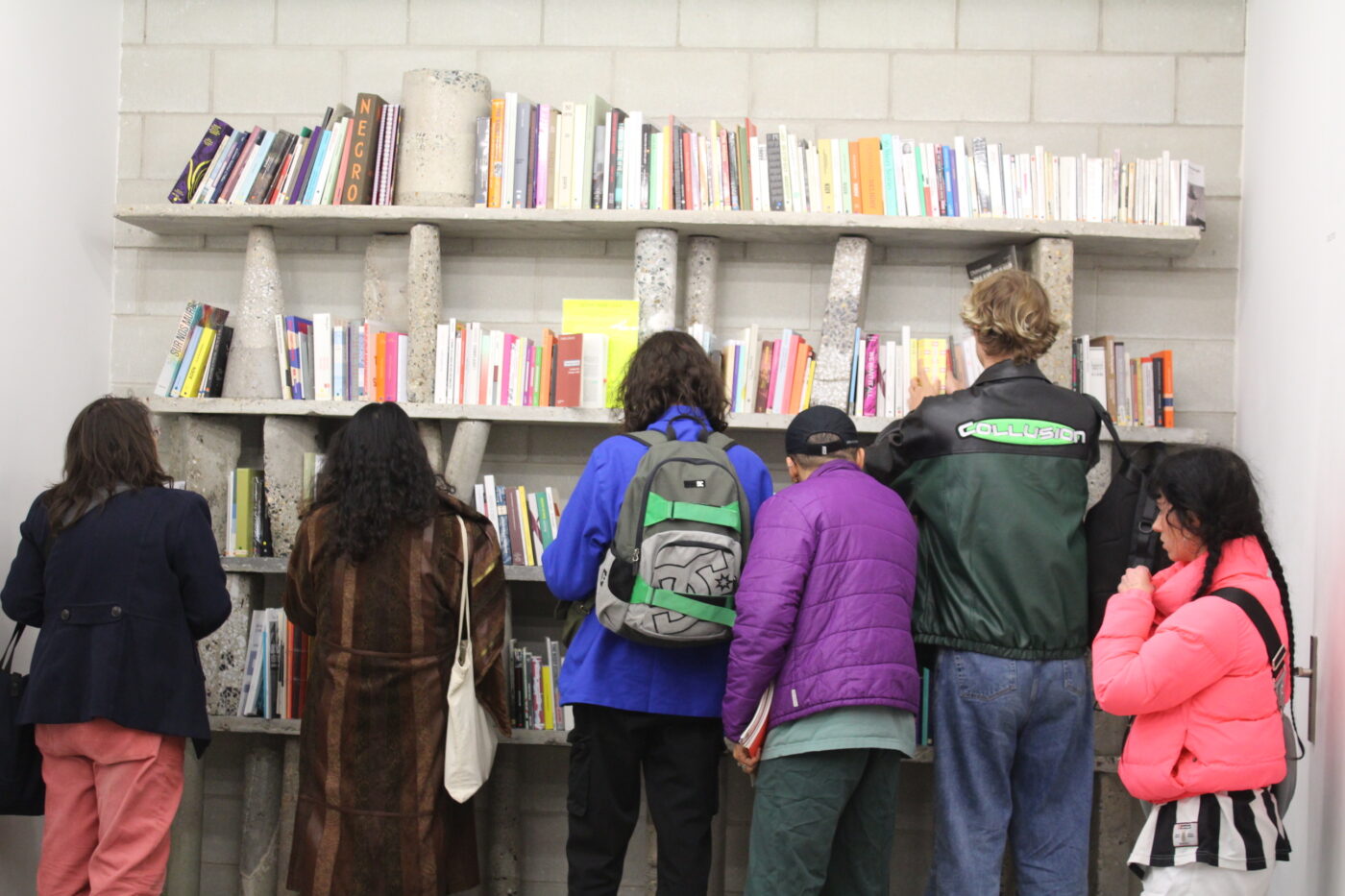
Works in situ
Reinforced concrete bookcase: Portland cement, sand, mineral fillers, steel, oxides and pigments, encaustic, 300 x 215 x 35 cm.
Photo : © DR.
An in situ work that will store the collection of books and documents of Bétonsalon, this bookcase by Romain Grateau is a knowing pun on the art centre’s name, a literalized vision of the form that un salon en béton [a concrete living-room] might take. A self-supporting structure, the bookcase extends and appropriates the functional architecture of the space through its modulation of horizontal lines and support modules. Combining tapered and squat columns with slightly skewed modules whose forms are at once rough and delicate, the different processes used to create this unit are clearly visible in the finished piece, offering a multiplicity of possible variations upon a material that is usually synonymous with standardized industrial production. Grateau plays with numerous densities, colourings, finishes and embedded elements, challenging our perception and our ability to separate rubble from art object. By combining careful touches of ornamentation with the heavy-duty techniques of construction, he blends genres and registers from masonry to self-build and from Rocaille to brutalism. The title of the work, drawn from the world of automobiles, refers to a technology that allows vehicles to travel long distances at high speeds. Grateau’s bookcase invokes this mixture of poetry, precision, power and mechanics, whilst subverting a form of masculinity anchored in bodily exertion and physical feats.
Mathilde Belouali
Series of 10 sentences in Blanc de Meudon on Bétonsalon’s windows
Commission « oeuvre in situ », Bétonsalon — Centre d’art et de recherche, Paris, 2021-2025.
Photo : Marc Domage, © Galerie Maubert et Adagp, Paris, 2025.
Daubed in whitewash, the four windows at one end of Bétonsalon’s glass façade are transformed into a pictorial surface. One after another, ten enigmatic phrases will be etched out within the whitewash in a standard font, devoid of any punctuation and rendered in tightly packed lettering. Over the course of the exhibition, Bétonsalon’s team will trace out a new phrase as each previous one is worn away. The short affirmations that make up this work by painter Sylvie Fanchon are uttered by Cortana, an intelligent voice assistant developed by Microsoft in the 2010s that is still in use despite already having been made obsolete.
Toeing the line between politeness and pushiness, invitation and imperative, Cortana attempts to make itself useful (IMHERETOHELPDOYOUNEEDANYTHING), to engage users in conversation (HELLOHOWABOUTACHAT) or to improve their productivity (ICANREMINDYOUOFIMPORTANTTHINGSANDMUCHMORE), whilst at the same time warning them not to get too familiar (PLEASEDONTPROVIDEANYPRIVATEINFORMATION). Its limitations nonetheless soon become apparent (IMSORRYIDONTUNDERSTAND). This simple yet already unintelligible language is characteristic of the straightforward and one-dimensional relationships offered by artificial intelligence assistants, which, beneath a helpful and servile veneer, gather information to increase technology companies’ profits and power. Fanchon’s pictorial production is based on pre-existing elements drawn from language and visual culture. Here she uses Cortana, a device at once intrusive, dystopian and comical, as a source of motifs for her paintings and in situ interventions. Facing out over the esplanade in front of Bétonsalon, eliciting questions and curiosity, Cortana’s invitations and their apparent authority are contrasted with the fragility and transparency of the surface on which they are inscribed.
Phrases stencilled in Blanc de Meudon on the windows of Bétonsalon
Commission “in situ” by Bétonsalon – Centre d’art et de recherche, Paris, 2021-2023
Photo: Bétonsalon, © Galerie Maubert et Adagp, Paris, 2023.
Bookcase in reinforced concrete: Portland cement, sand, mineral fillers, steel, oxides and pigments, encaustic, 300 x 215 x 35 cm.
Photo: © DR.
